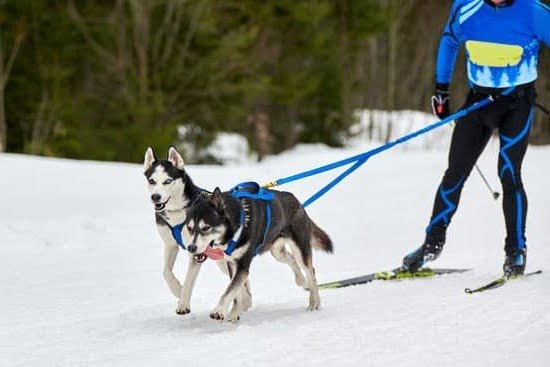Provide Resources for Training Deaf Dogs
Trainers
1. Deaf Dog Education Action Fund: The Deaf Dog Education Action Fund provides information and support to people who are considering adding a deaf dog to their home, as well as those who need advice on how to successfully train and communicate with their deaf pup.
2. Deaf Dogs Rock: Deaf Dogs Rock is a non-profit organization dedicated to educating the public about the joys and responsibilities of having a deaf dog in your life. They offer resources like training tips, articles, and trainer referral services.
3. Think Pawsitive: Think Pawsitive is a company that specializes in training deaf dogs with positive reinforcement methodologies. They provide educational materials, online courses, private consultations, and seminars for owners and those considering adopting a deaf pup.
Books
1. How To Train A Deaf Dog: An Essential Guide For Teaming Up With A Silent Pet, by Amanda Lefebvre: This guidebook provides useful tips for teaching basic commands (e.g., sit, stay) and also offers information about activities specific to both hearing and deaf furry friends.
2. Here’s Looking At You!, by Rob Kuta & Richard Pitcairn: This book teaches readers how to use sign language not only to train their pet but also as fun activity they can do with him or her. It includes tips on body language interpretation in order to easily relate with your pet!
3. Teach Your Dog Sign Language!, by Steven Walcott: This step-by-step guidebook is beneficial for all breeds–not just those who are impaired, since it takes advantage of humans’ ability to speak using signs instead of sound-based communication (e.g., verbal commands).
Videos
1. Signing with YourDeaf Dog TV Series: This YouTube channel offers an introduction into sign language communication between humans and dogs through the lens of certified animal behaviorist Colleen Pelar’s own experiences when introducing her own pup into the family dynamic that already included two hearing dogs and two children capable of signing themselves!
2.”Sign Language for Puppies” Seminar Series:This online seminar series conducted by terraCog wets your appetite for understanding how important it is for breeders, veterinarians or adoptive families looking into taking care of puppies from birth through adulthood so that deafness does not become an issue in their lives later on down the road–literally!
Establish a Communication System with the Dog
To effectively establish a communication system with a deaf dog, the trainer should be patient and consistent. It is important for the trainer to make sure that the dog knows to pay attention to them at all times. The trainer should also use consistent hand signals or visual cues when communicating with the dog. This may include using exaggerated hand gestures or pointing at objects in order to grab the dog’s attention so that they understand what is being asked of them. To ensure successful reinforcement of commands, they should always reward their deaf dog with treats when they reach goals or do something correctly. This will help create positive associations whenever commands are used by rewarding good behavior Focusing on one command at a time will help speed up progress, as well as introducing basic obedience skills first before more advanced ones. Additionally, providing stimulating activities like playtime and interactive toys can help keep them engaged and have fun while learning new things.
Discuss Common Deaf Dog Training Challenges
One common challenge with training a deaf dog is communicating effectively. Dogs rely heavily on physical cues, vocal commands, and body language. With deaf dogs, these cues are not possible and it can be difficult to make yourself understood. Training techniques like hand signals, tactile signaling (such as tapping or stomping the ground), and light signals like flashlight beams or laser pointers can all be used in place of verbal commands.
Another challenge is safety. Deaf dogs cannot hear any danger that may be coming their way and they need to be kept safe at all times. This means extra caution should be taken when out on walks, such as making sure the dog is always leashed and that protective equipment such as a harness or GPS tracker are worn if necessary.
Deaf dogs also require more patience compared to hearing dogs due to their lack of understanding verbal commands. Training sessions should be kept short so that the dog does not become frustrated or overwhelmed; instead using positive reinforcement when rewarding desired behaviors.
Leverage Technology to Help with Training
Technology can be used to make training a deaf dog easier by providing visual cues for communication. Items such as LED lights, blinking collars, and vibration units are all tools that can be utilized in the training process. LED lights or blinking collars allow owners to communicate basic commands from a distance using distinct colors or patterns. Vibration units enable specific vibrations to be felt when pressing buttons on a remote controller that correspond with particular commands, like sit or come. Additionally, these items can also provide reinforcement during training; dogs who have mastered behaviors like staying still while the door is opened, may receive rewards through either a treat delivery system controlled by remote, or vibrations indicating praise. By utilizing technology in this way, training a deaf dog can become more successful.
Engage With Other Deaf Dog Owners
Connecting with other owners who have deaf dogs can be extremely beneficial. By exchanging experiences, one can gain insight into effective approaches to training and socializing a deaf dog. Other owners may also provide tips on how to remain calm in difficult situations. For example, if your deaf dog is trying to escape from the yard, finding out what worked for another owner in a similar situation may prove invaluable. Additionally, you can learn various ways of communicating effectively with your pet, such as certain hand signals or the use of vibrations and light that can alert a deaf dog to actions that it missed due to not being able to hear verbal commands. By leveraging shared knowledge among peers, you are able to create solutions that are tailored specifically for your deaf dog. Furthermore, this group of individuals understand first hand the unique challenges associated with owning such a pet and as such offer much needed support and encouragement during difficult times while celebrating successes together.
Showcase Success Stories
When it comes to training deaf dogs, success stories can be incredibly inspiring for owners who are just beginning their journey. Many owners may feel discouraged when considering the challenges of training a dog that cannot hear verbal commands. But through interviewing owners of successfully trained deaf dogs, more people can understand and appreciate the joys that come with having a well-behaved pet even if they cannot hear their owners’ instructions.
Interviewing owners of these impressive pets can show both the dedication they put into working with their pup and how rewarding it is to have a deaf dog that responds obediently to commands given in sign language or hand signals. These interviews will also help break down what specific tactics were used to succeed in successfully training their pet such as using visual obedience cues, positive reinforcement rewards, and consistency. Finally, talking with others who have also been through this process is an incredible source of support and comfort amidst the unique challenges associated with raising a hearing-impaired pet. Through showcasing the successes within this community, more people will feel encouraged to join in on its positive growth.
Enlist the Help of a Professional
Working with a professional can help achieve positive results when training a deaf dog. A professional has the expertise and experience to be able to understand the inner workings of a deaf dog and develop an appropriate training plan. A professional can also provide guidance on positive reinforcement techniques and diagnostic tools that can identify issues early on in the training process. Additionally, they will know the correct body language and signals to use that are specific to deaf dogs and all their nuances. Most importantly, working with a professional will provide insight into how best to establish communication with your dog in order to truly connect with them and make the experience enjoyable for both of you. With the right knowledge, commitment, and support from a professional, you can successfully train your deaf dog and create a strong bond.
Showcase a Live Training Session
Live streaming a training session with a deaf dog can give viewers an opportunity to view best practices for communicating with dogs that are not able to hear. This type of demonstration would be beneficial for people looking for guidance on how to work effectively and safely with dogs who are deaf. It would help display positive reinforcement techniques, the right ways to make an individualized sign language system between the pet parent and their deaf pup, as well as other important strategies when working with deaf dogs. Even though every breed is different, this session could offer general advice on communication strategies, teaching commands such as “come” or “stop” that involve hand gestures and signals, as well as tips on how to eliminate fear and promote confidence in a deaf dog. Viewers would walk away with a better understanding of how to manage behaviors, reward obedience and provide comfort in unfamiliar situations. By watching this live training session, viewers would gain the knowledge they need on proper socialization and support for a successful relationship between pet parents and their furry loved ones.
Highlight Common Deaf Dog Breeds
Many breeds of dogs can be deaf, though some are more prone to this condition than others. Popular deaf dog breeds include Dalmatians, English Setters, Bull Terriers and Jack Russells. Generally speaking, these breeds have a genetic predisposition towards being affected by the disorder or being born with it.
Dalmatians are particularly susceptible to hereditary deafness due to an excess amount of white pigmentation in their skin and ears. As such, they may be predisposed to having some level of hearing loss from birth.
English Setters tend to be very sensitive animals with a high level of intelligence. As such, when dealing with someone who is deaf there is a need for extra patience and understanding to ensure successful training. Despite this obstacle, English Setter puppies can learn hand commands just like a pup that has full-hearing capabilities as long as you keep calm and remember not to get angry if things don’t happen immediately as expected.
Bull Terriers are known for being incredibly loyal and brave which makes them ideal pets for people who live alone or have trouble communicating with others due to their hearing disability. The breed’s courage is often demonstrated when they guard the house or property; they will protect their owners no matter what the situation might be. In terms of training, Bull Terriers require consistent training utilizing both verbal commands and hand signals directed towards their bodies so that they can understand what you want them to do without fail every single time since they cannot hear vocal commands effectively.
Jack Russells are small but plucky and full of energy – they make great adaptable pets when living with a hearing impaired family member or owner as long as proper obedience training is conducted right away before any bad traits can begin manifesting themselves in the pup’s behavior due to lack of communication with its human companions. Their enthusiasm for life paired with easy-to-follow hand cues makes these little pups an excellent choice for those wanting an obedient companion during difficult times.
Promote Strategies for Prevention of Deafness
The best way to prevent deafness in dogs is to be sure they are spayed or neutered as early as possible. This helps reduce the risk of hearing loss that can occur in puppies due to certain hereditary conditions or illnesses. It is also important to keep up-to-date with vaccines and checkups, as diseases like canine distemper can damage a dog’s auditory system.
In breeds prone to hereditary deafness, it is vital to work only with breeders who screen for hearing. Furthermore, during training especially when teaching hand signals and cues, it is important for all commands and rewards to be consistent and clearly understandable. After all instructions are given, take one step back and watch your pup’s reactions; if he does not respond, you should try using another sign or sound such as clapping or shaking a rattle. Other options include scent identification or tactile awareness; the former includes rewarding your pup with treats based on a particular type of smell while the latter involves stimulating areas on their body with different textures such as a brush or feather.
It is also helpful for owners of deaf dogs to research about effective methods for communication so that both parties are comfortable and confident during obedience training sessions. Clickers, laser pointers, flashlights, flags with bright colors have been shown to be successful in alerting dogs (particularly those born deaf) of commands and results from repetition, positive reinforcement and consistency from the owner encourage even greater success!

Welcome to the blog! I am a professional dog trainer and have been working with dogs for many years. In this blog, I will be discussing various topics related to dog training, including tips, tricks, and advice. I hope you find this information helpful and informative. Thanks for reading!





